In the previous post we discussed many of the traditional vs. unique characteristics of Cogmind, but one area was just too big to not cover on its own: the makeup of the world itself. For over a year on this blog we’ve demonstrated individual mechanics and features, along with how those fit into a bigger picture. Here for the first time I’d like to look at the biggest picture possible with an introduction to the world of Cogmind from a macro perspective.
Setting
If you played and remember the Cogmind prototype (7DRL), you probably don’t remember the story.
We can’t fault your memory, because there wasn’t much of a story to remember--a single sentence in your message log towards the beginning indicates you’ve “escaped from the scrapyard,” and from there it’s just fleeing and shooting robots. If you manage to beat the prototype there is a tiny bit more text, but other than that no greater setting or actors are provided to flesh out the backstory. The website and manual offered slightly more in the form of a paragraph of generic sci-fi material, which still falls into the “excuse to throw some mechanics together” category occupied by many story-light roguelikes.
Things are very different now.
The final version will contain a complete world with NPCs to meet, lore to discover, and secrets to uncover, all while enabling you to become a part of unfolding events and help shape their outcome (if you wish to). A future post will be dedicated to exploring the story of aspect of the game, which in the alpha version initially only exists as in-game lore--the semi-interactive parts will be coming later.
This post focuses on the world in which that story takes place, though only in a general sense because gradually learning the details through play is part of the fun.
For now I’ll say the story of Cogmind takes place in our galaxy (though not on Earth), a couple centuries in the future. Your part of the story is played out underground on a single planet, but the whos, whats, and whys are for you to figure out.
Update 161110: More than a year later, Cogmind’s story elements are nearing completion, and I’ve put together a series of articles beginning here that cover the value, characteristics, and methods for incorporating story into a procedural game. No spoilers, but lots of observations and principles :)
Layout
As in the prototype, you start at the bottom of a subterranean complex and are attempting to reach the surface. However, we now have multiple crisscrossing routes leading to that destination.
In terms of both content and play experience, the world can be divided into two distinct types of areas: main zones and branches. The main zones link together to form a straight shot from start to finish, while it’s also possible to move between those and outlying branches wherever you find the right access points.
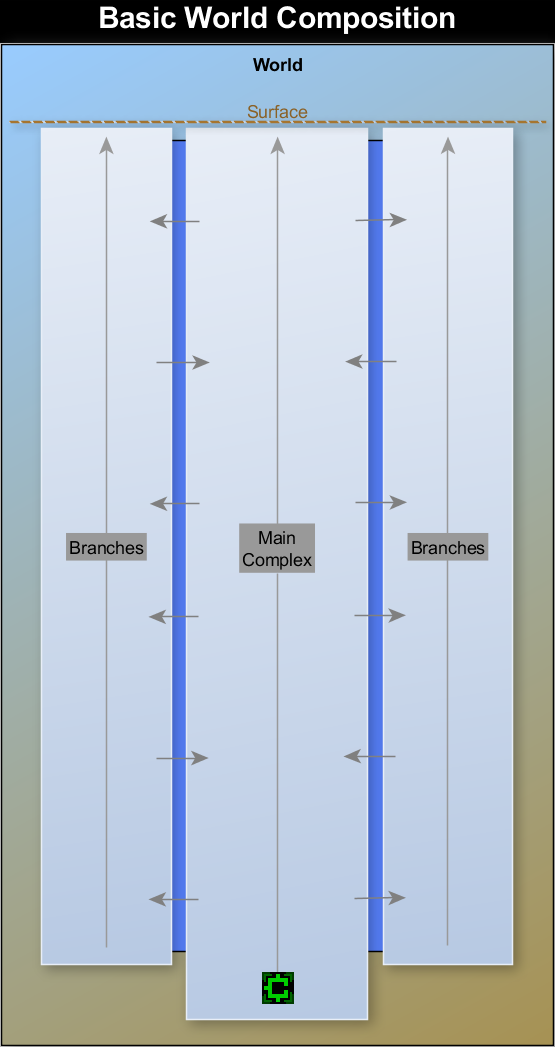
A simplified breakdown of Cogmind’s subterranean world. (Note: The first alpha version includes the entire main complex and two early branches; the many remaining branches are still under construction, to be added over the next 5-6 months. Thus it currently includes much of the “core game,” while the planned additional content will turn it into the epic adventure prescribed by the design doc.)
So why bother taking branches if you can go straight to the end? After all, Cogmind has no XP system so the need to seek out additional areas in which to grind, a common impetus for travel and exploration in RPGs, does not apply.
The route you take will actually depend on a rather large number of factors.
You can in fact take the direct path straight to the end--the straight run is a perfectly valid way to win, and usually the fastest. For an experienced player, the biggest advantage there is a more predictable environment, an idea you’ll better understand with the next two posts introducing the central AI and examining the anatomy of individual floors.
While branches are completely optional, there are numerous reasons you may end up visiting them, primarily to:
- Escape pursuit
- Explore the story
- Acquire better/special components and allies
- Challenge yourself
By design, there is a somewhat greater chance that you’ll discover exits leading to branches before those that enable you to ascend to the next depth. Thus you may sometimes decide (or be forced) to take these exits first in order to evade dangerous pursuers, possible because pursuers will not chase you to other areas--there is an implied “you made it into inter-zone tunnel networks and lost them.”
In turning the prototype into a full game, to provide more room for content I expanded the world horizontally rather than vertically. This is seen with both the addition of branches, and the fact that many main complex maps are much larger than before. Last year I showed an image which appropriately demonstrates the evolution:
The significant increase in scale means it is now more difficult to reach or happen across normal map exits (though there are now additional means of getting your bearings via hacking etc.), and therefore a greater chance that due to poor choices (or just bad luck), you may at various points find yourself in a bind and end up taking advantage of alternative routes offered by branches.
Branches are useful as more than simple escape routes though, especially if you discover their entrances early enough to warrant intentionally taking a detour. From a mechanical standpoint, some branches give access to special parts not found elsewhere--all the best components in the game are only available via branches. In the same way, some branches might also be a source of allies, help of the kind you’ll rarely encounter in the main complex.
In both cases it will take practice and experience to figure out what’s out there, how to get it, and whether it’s worth going out of your way to get. I can say that some of the additional branches will provide helpful means for tackling the late game, most importantly the alternate endings.
Said alternate endings themselves are in fact only accessible outside the main complex, and in this we see another important aspect of the branches: story elements. Pretty much all of the story, aside from lore you can access via terminals, is told throughout the branches. While you’ll be able to learn about what’s going on during your travels through the main complex, that area is more similar to the traditional mechanics-focused roguelike experience. The vast majority of opportunities to engage and affect the story exist off the main path.
As such, branch areas are built differently than the main complex, designed with a possibility for interesting semi-random (and therefore less predictable) events. I’ll talk more about this in the next post.
Regardless of part-, ally- or story-related benefits, visiting more branches is also an optional way to challenge yourself, and will help achieve a higher final score.
As you can see, branches have a lot to offer. That said, you won’t be able to completely avoid the main complex. Branches will eventually force you back into the main complex at some point, and you’ll have to find another branch exit to leave again.
For a demonstration of a rather long path through the world, see the image below:
Note that this is just a mockup--the world map is one of the final remaining UI elements to implement, so there’s no way to access it in game yet. It will look something like that, and include animation. (Update: You can see the world map in action here, and a sample world layout in this later article.)
The map is only revealed gradually as you traverse it, with question marks standing in for names of areas you haven’t officially identified. You as a player will learn to rely on meta knowledge to know where you are, but in game the names of local and neighboring regions are only discovered via hacking. For the mockup above I’ve made the three main complex areas known, “Materials,” “Factory,” and “Research,” as these are unchanged from the prototype.
Have fun discovering the other maps! There are plenty more not shown, though again the alpha will initially only include two early-game branch types. This is both to demonstrate what branches will be like, and to ensure there is enough interesting early-game content for those of you who, um, spend a lot of time in the early game ;). Other maps are coming, though you’ll have your hands full with the existing large mid/late-game main complex maps since for now they’re balanced on the hard side until we get more alternative routes in there.
Access Points
Access to different maps/areas is via one of two types of exits: “stair exits” take you up to the next depth (and by extension the next main complex map), while “door exits” lead to branches. Collectively these are simply called “access points.”
In ASCII, exits to main complex areas are depicted using the traditional ‘<‘, while exits to branches use ‘>’. In tiles mode, the two are represented by stairs and a special door, respectively.
The destination of a given exit, as demonstrated above with their labels showing, is only shown if you’ve already used hacking to discover where they lead, otherwise both types appear as stair exits and you can’t differentiate the two (labels will simply read “???”). So taking an unidentified exit could lead you on an unintended detour, a risk you can either accept or avoid by hacking terminals to figure out which direction is which.
There are sometimes other clues that enable experienced players to discern where an exit leads without hacking. Certain branch exits may appear with a unique recognizable layout.
Progression
A key design element I’ve yet to explain here, one without which might leave you confused, is that there is no backtracking in Cogmind. You can’t simply step back through a door and return to the previous area--advancing to a new map is a permanent move.
You are technically being pursued through hostile territory, and by the time you leave an area your presence there has been noted and retracing your steps would be too dangerous. That and the idea is you’ve covered quite some ground between leaving the previous map and entering the new one, which is why you’re suddenly a good bit safer after coming out the other side of an exit.
Earlier I mentioned the game’s emphasis of horizontal over vertical depth. Regarding layout, we can see that the quickest path through the game traverses only ten maps, while taking branches could easily lengthen the game to twice that or more. Combine this with the lack of backtracking and you’ll find that it’s impossible to visit every location in a single play. This provides us with greater replayability, though that is not the purpose here--we get plenty of replayability via procedurally generated content! Instead it forces an experienced player to make decisions that give up one potential benefit for another, sort of like choosing which of many parts to carry along, only on a much larger scale.
Another reason worth designing away excess vertical progression is that we assume each new depth should provide us with increasingly powerful components and robots to avoid seeming too repetitive. While the game does in fact use this kind of progression, the level range is small enough that each can introduce truly unique content rather than an endless supply of rehashed items with modifiers (+1, +2, +5, +10, +25, +50…+1000…). Cogmind focuses on mechanical differences and only a mild power curve--it’s linear and by the numbers indicates that the average late-game components are in a lot of cases only three to four times as effective as those found at the beginning. With a little luck an early-game robot could even fairly quickly take down a mid-game robot.
The design does not migrate completely away from vertical progression (of item stats) because there is something to be said for that “I found another cool, better thing!” feeling, though as a compromise said progression is often combined with some extra meaningful benefit.
So we’ve established that you will likely end up taking some branches to either side of the main complex, either by choice or by force, but at the same time the game does a lot to push you upward. This is accomplished by the strictest limitation of all: Cogmind’s core integrity. Damage to the core cannot be repaired, and is only restored each time you evolve when moving closer to the surface. (The reason for this is part of the story.) Some players didn’t like that about the 7DRL version and insisted on a way to repair yourself, but this is really a core feature of the game, without which much of the design falls apart. Depending on strategy and performance, in some cases you won’t have the endurance or loadout to travel through branches at a given depth before you have to ascend towards the surface in order to evolve (very important when the alternative is permadeath!). For the same reason, you also can’t spend too much time on a single map since you’ll lose the war of attrition against a relentless enemy war machine. Read more about this and Cogmind’s other “food clock”-like mechanics here.
Evolution
In Cogmind you don’t have a lot of your own stats to increase over time, nor do you need many. There is no character generation process through which the player can say “this is my character.” Most capabilities are instead bestowed directly by the components you choose to attach, and personal (if temporary) differentiation happens at play time.
Those few base stats you do possess increase automatically each time you evolve on ascending to a new depth, and they do so at the same rate each game (i.e. they are not randomized). Core integrity and heat dissipation rise in small amounts, while the only other, and certainly most important, “stat” is the number of slots of each type to add during evolution.
Thus even if you take an unidentified stairway out of an area, it will be obvious if you are actually ascending to another depth (and therefore a main complex map), since it will allow you to select your new slots instead of going straight into a new area (branch).
Combat Optional
Overall the route you take each game will largely be a factor of chance and strategy, both at the macro level (is the ultimate goal a high score? a certain ending? a specific achievement?) and the micro level (i.e. your preferred build and what components you find or manage to steal).
Without a need to grind to advance, you really are just looking for the exit(s) on each floor. As you’d assume the best way to achieve this is to be as sneaky as possible (except when you can’t :D).
Personally I believe Cogmind’s mechanics offer the best roguelike integration of stealth into a game that can just as well be about all-out open combat. This is important because the most successful strategies will likely be a stealth-combat hybrid, which in turn affects your route through the world. For example, after failure to avoid being spotted in a particularly dangerous area, you may decide that that fighting your way through an approaching army to get to a better exit is not worth the risk compared to taking a less desirable but unguarded exit you passed earlier.
It can also take a little while to acquire proper stealth gear (and is easier to lose it to intense firefights), so runs will often fluctuate between death-mobile and ninja-bot, simply by necessity and circumstance.
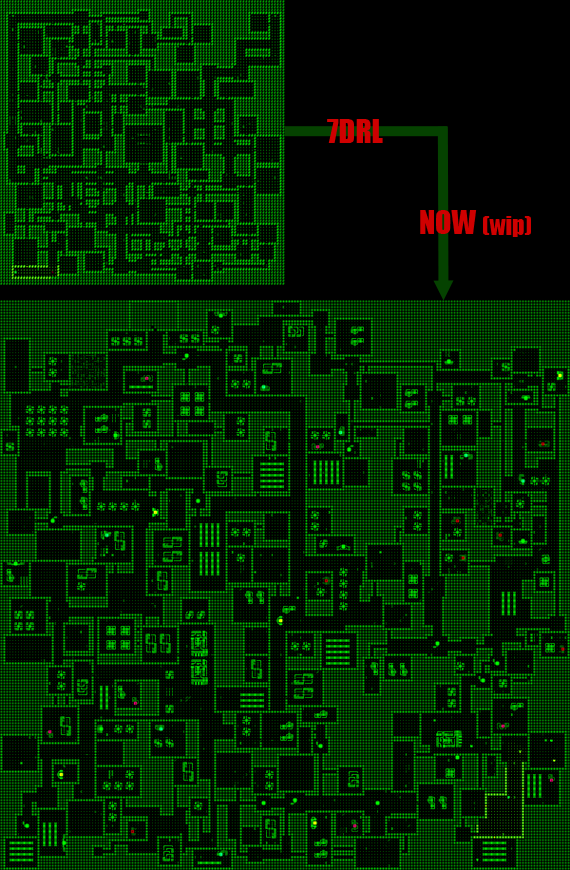
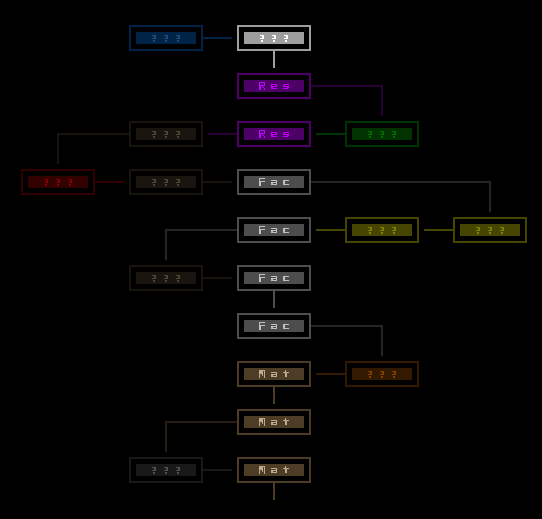
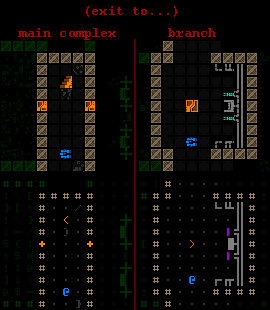
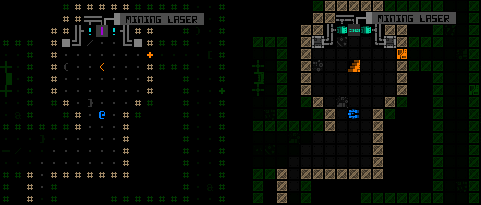
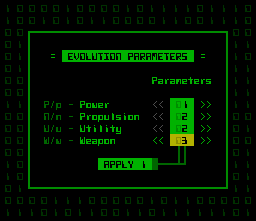


11 Comments
The most interesting thing I took from this is that people apparently complained about the lack of healing in the prototype. What the heck? I mean for a start the amount of actual hp you have in Cogmind is massively higher than in pretty much any other roguelike. On top of that, if you have some way of restoring health on demand, what are you running from?
It reminds me of all those people who complain about the pursuing rebel fleet in FTL. For me, some of the most interesting choices, most challenging gameplay, and best emergent stories, all come from having something constantly pushing me forward. You can’t always stay behind and grab absolutely everything you want, so you find yourself in more desperate situations. And desperate situations, and the ensuing choices and gambles, are what MAKE a roguelike.
Ahem. Anyway. Something interesting that comes up from reading through this is the opportunity to grab unique components from braches. I like the sound of that, but it does raise a concern. Parts in the prototype always felt really fragile -- any time you got into a fight at all you could be fairly sure SOMETHING was going to take some damage and you were nearly always scavenging for spares. I liked that a lot. But if you’re grabbing stuff from a branch that you can’t find anywhere else, and it’s as fragile as all the other components, you’re almost certainly going to get a lot of players using up their (very limited) inventory slots hoarding super rare components that they refuse to use. At least, I know myself well enough to know I’D probably do that. I guess some of us might just need to unlearn some bad habits, haha.
Reading this also makes me giggle. I can’t wait to see some of the ludicrous challenges people impose on themselves -- and win, probably. There’s nothing like a roguelike community for going out of their way to make things outrageously difficult.
I think the reaction to lack of healing comes from the fact that it’s rather unusual for a roguelike. Certainly from a design perspective it makes a lot of sense, but this among some of Cogmind’s other unique mechanics will have genre players reevaluating their approaches to traditional situations. Experience has conditioned us to deal with low-HP situations by immediately thinking of and finding ways to restore it, of which there often quite a few. As you’ve recognized, by eliminating those features Cogmind produces a much different type of play.
You do have a ton of HP in Cogmind, and just a few days ago I finally started playtesting to make balance changes for the first release… one of those changes: You get even more HP =p. I lowered your starting HP/integrity (because the first couple maps are simply too easy once you have good technique), but it now increases at twice the original rate. This was necessary to make forays into branches a little more feasible, and probably gives the main route an “average” difficulty for the experienced player--that’s down from the “insane” difficulty level of before, and I think it’s a welcome change because a basic win won’t be so far out of reach, while hardcore players can instead go for additional challenges, whether self-imposed or those made explicit by the game world (such as alternate endings and reaching special zones). I hope the structure sufficiently increases replayability in the long run; for alpha there are fewer areas so replayability in the short term should instead be driven by the large amount of robot/item content and mechanics to discover.
I’m sure lack of HP restoration will take some getting used to, same with the “what do I do with rare parts that I went out of my way to get but am afraid of losing?” situation that you mention. It’s similar to reaching the end of a “regular” RPG with that massive stash of ultimate consumables, only worse because in Cogmind pretty much everything is “consumable!”
That said, I think there are some conditions that help mitigate that effect:
1. You won’t be going out of your way for parts until the mid/late-game, and at that point you have a lot of slots. Having a lot of slots means it’s much less likely that you’ll lose a given part, even more so if you use armor or other protective gear.
2. Where appropriate, most special parts are either themselves protected by armor (i.e. have a greater integrity) or very difficult to hit (low coverage). I’ll be sure to adjust these factors as necessary to make sure that acquiring them is worthwhile.
3. Some of these special parts are consumables, so you don’t have to worry about losing them in the normal way.
Yes, you’ll still lose beloved parts, but knowing when to use them despite the risks is part of the game ;). Very good observations, though! We’ll be revisiting these considerations once the branches are added and fleshed out.
I worry (a little bit) that you’ve got a set of goals in uneasy balance, here:
You want pushing to other levels to be part of the ‘food clock’, and you want side levels to have a risk/reward in terms of delaying the repair cycle in return for more danger, but also greater rewards and/or plot. To emphasise this, once you move into a level, you can’t move out.
You want most builds to be viable in the abstract, including keeping Hacking and Combat and Stealth as useful, but being able to more or less forgo one or two of them should still be possible… which implies the ability to avoid needing Hacking.
…You then want it to be difficult to tell whether a door is going to push-your-luck or advance-and-heal unless you do Hacking. When the question might in fact be most critical at the point in time you’re low on health and have had your Hacking gear blown up, and would really rather not go scrappin’ with Programmers just to nick their Hackware…
This starts to sound a little bit like it could force a player to engage in Russian Roulette when at their lowest in resources, and the least able to react to a bad pick. Is this, um, intentional?
Valid concerns! Though I don’t think it will be much of a problem for the experienced player, and after watching someone play the prototype just a few times (via an LP series), I don’t think it takes too long to gain the necessary experience. Before long you’ll notice that some of the main complex exits are guaranteed to appear in a certain kind of corridor layout. I’ve even seen players correctly guess that a main complex exit will be around the corner without having even reached it yet! So without hacking you’ll be able to identify 1) those, and 2) the special branches that have different appearances (as the Mine example in the post above demonstrates).
Aside from these, a few of the exits in a given map will be more randomly placed and lead to either some branch or the next main complex area, so it’s only this portion which you can’t be certain about. Those are the ones where hacking will help you, but note that you don’t have to be able to hack right then and there--you only need to successfully hack the main exit destinations once, from any terminal on the same map (which tells you where all of them are and where they lead), So if you’re a hacker and this is important to you, you’ll almost certainly do it immediately on entering a map and finding your first terminal, at which point you shouldn’t be ready to keel over.
The Russian Roulette is, I think, a minority of cases. During my recent multi-day playtesting stretch I didn’t encounter any such situation, as a hacker or not.
Probably the most annoying thing about the mid/late-game game right now is that you’ll find branch stairs/doors, but just be told “that area is not available yet.” So for now it’s pretty easy to stay on the straight path! At worst you’ll say “look! An exit!” only to race there and find it’s blocked. I wonder if I should temporarily make these look slightly different from the other exits, to avoid disappointing players who reach them. I certainly want them visible so everyone knows more content is coming in that direction and can in the meantime start learning where these connections are found.
Now that I think of it, the message should at least indicate the type of map it would lead to, since you otherwise would’ve been headed that way.
So without hacking it’s not possible to tell, except that it probably is?
I guess if this is like learning the Vaults in Angband, it’s probably OK.
That said, it might be fun if at least some of them do actually advertise their presence. One must tempt the player, after all… :)
As is I think an experienced player might be uncertain about where 25% or so of exits lead, regardless of whether they’ve hacked the system. A more important purpose of hacking is to find where those exits are located. I like the idea of relying on meta knowledge to at least have an idea of where an exit will likely lead once you’ve actually found one, because finding them in the first place is difficult enough.
Having some exits advertise their presence is a good concept we’re familiar with from other roguelikes… I wonder how that could be logically integrated into the world. I like the idea of using it to tempt players!
Clearly there is a sign on the door!
… Even if that sign is an RFID tag atop a heavy steel door with “DANGER: DO NOT ENTER” chirping out to the locals; the robot equivalent of yellow-and-black hazard tape.
Obviously not a pathway to the next level; do you want to try? After all, it’s clearly a warning for your own good… or perhaps the robots have reasons to not enter that do not match your own goals. (Balrogs vs Beorn, eh?)
… you could even have the ‘signposting’ on many such doors be fragile to EM, explosions and heat used in their proximity; They were never designed for combat. Pity you burned the warning off the door, eh?
Not every door needs such signposting. But some doors might still be obviously distinct from the others.
That’s quite feasible in areas outside the main complex, where it would be easier to fit into the lore.* EM does/can play a role in access to certain areas, but that’s an “undocumented mechanic” ;). Certainly my intention with the prefab exit areas is to suggest where they lead (even if you’re seeing them for the first time) though once you know what they look like it is always obvious where they lead. Right now there aren’t quite enough options, but if we add more then perhaps some such exits could be more ambiguous looking, to still be suggestive but still not definite.
In response to your comment I was thinking more about advertisement as knowing that a given type of exit is somewhere in the level (through some indicator other than hacking results). There the temptation lasts longer and can drive you to look for it even after finding another exit.
*I often mention “The Lore,” though I’ve never shared much about so it’s hard for anyone to join the conversation on that front just yet. Soon…
Is the lore so rigid as to allow doorways that appear indistinguishable from one another, yet not also doors that look blatantly different?
I could see a difference between ‘convinient hole in the wall’, ‘collapsed wall revealing a cave ahead’, ‘intended accessway’, and ‘ominous barred blast door with the hydraulics on this side’, for a start. :)
Anything is possible! For main/branch exits there might not be enough of them to allow for sufficient variation (more than what already exists), while what you describe is probably more applicable to subarea access.
“hydraulics on this side,” I like the sound of that :D
…already gave me an idea that will now definitely be in there somewhere =p
Always happy to ‘help’. ;)